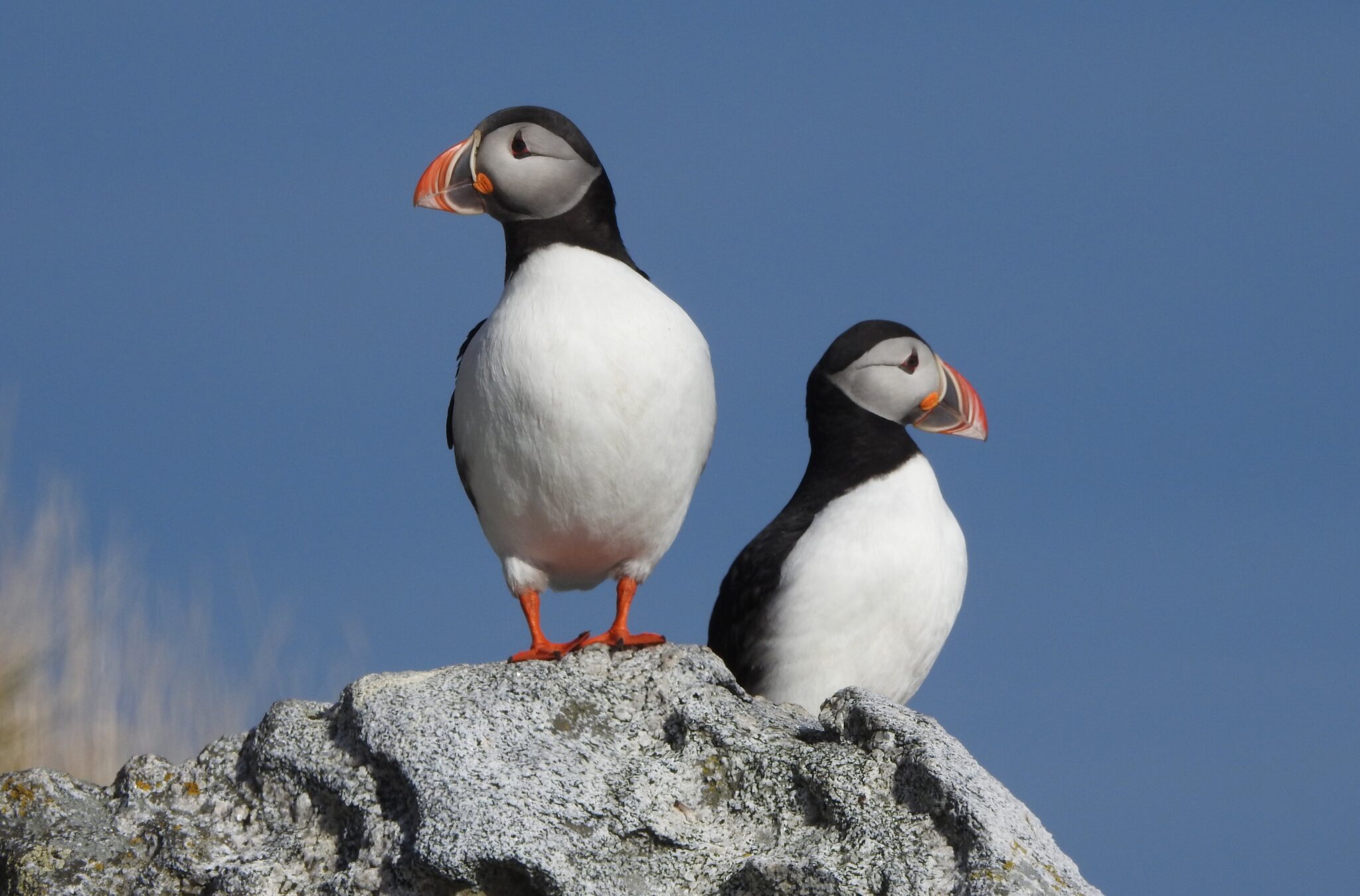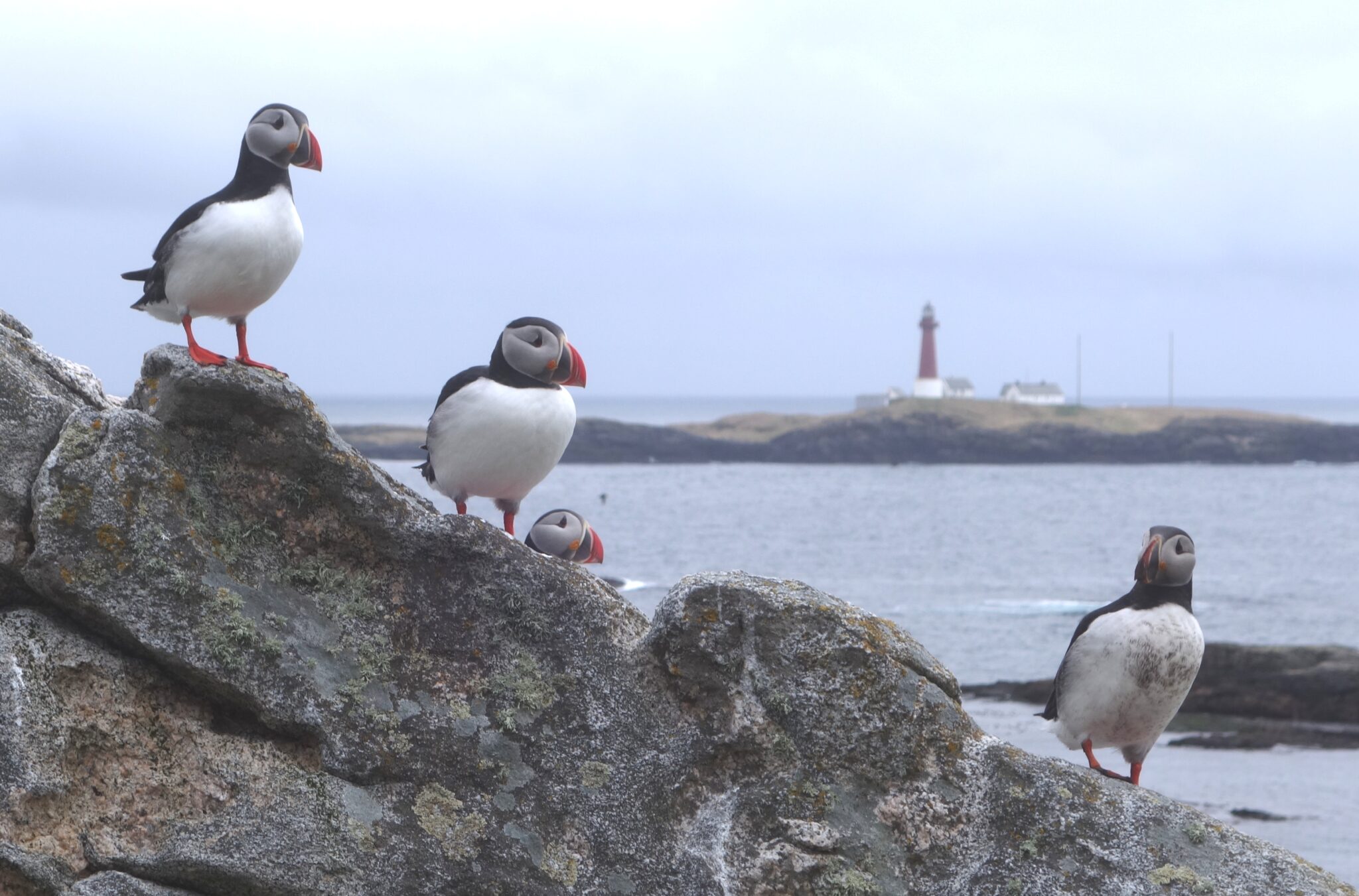Breeding conditions affect colony attendance in Atlantic puffins
Many seabird species have experienced poor breeding conditions during the last decades, but how this affects sexual differences in their reproductive behaviour is poorly understood. A recently published study of Atlantic puffins Fratercula arctica carried out at one of SEAPOPs key sites, reveals that females invest more in caring for the offspring than males, and the difference increases the longer they invest in sustaining the chick.
Food availability matters
Male and female birds have different roles in reproduction and, thereby, in their reproductive investment, which in turn may increase negative effects of poorer breeding conditions caused by e.g. climate change or ecosystem regime shifts. By using a 33 year long time series of resightings of Atlantic puffinsindividually colour-ringed as breeders on Røst in Northern Norway, the difference in colony attendance of male and female birds was shown to depend on the environmental conditions for raising young, proxied by the average duration of the chick period and size of the herring Clupea harengus fed to the chicks in the colony each year. The longer the chick period, the more was the sex ratio of adults sitting visibly in the colony biased in favour of males.
Persistent females
An increase in herring size, indicating better feeding conditions for raising chicks, led to more observations of both sexes. Additionally, the researchers found that birds were observed less with age, and females more so than males. The study adds valuable insights to our knowledge base about life-history theory on sexual differences in trade-offs between individual investment in breeding and own survival. The results suggest that females are increasingly more willing than males to invest in provisioning for the chick the more and longer the chick needs such care.
Read the article:
Contact person: Tycho Anker-Nilssen, NINA

